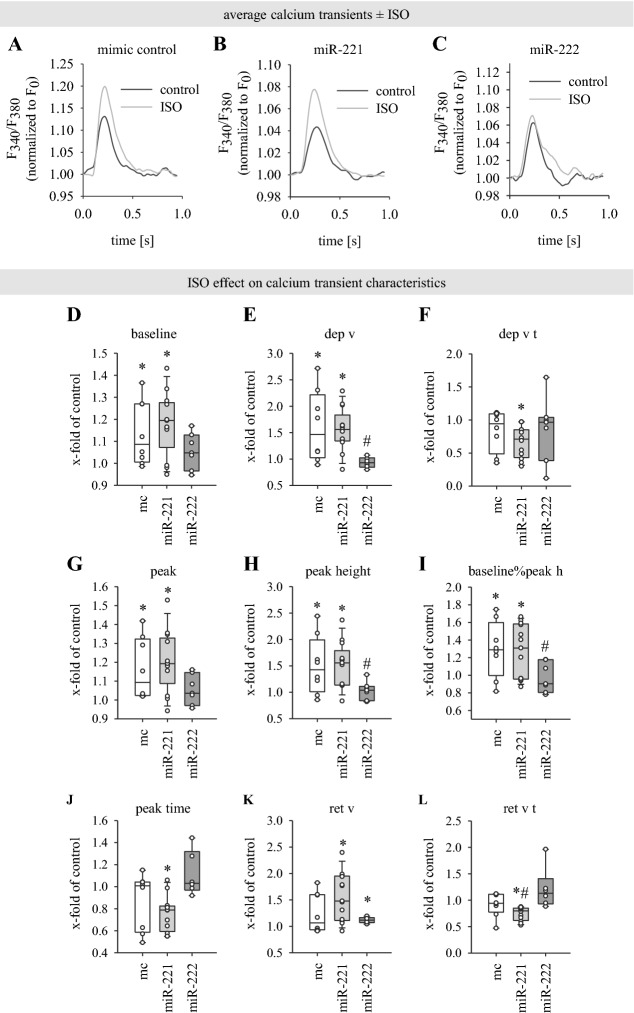Fig. 4.
The positive inotropic effect of ISO on [Ca2+]i is lost in miR-222-transfected neoCM monolayers. A–C Average calcium transients show differential response to 10 µM ISO in miR-222-transfected monolayers. Exemplary average transients are obtained from paced transients only (at least 5 transients) from one measurement each. Transients are representative for ISO effect on transient amplitude characteristics, not for baseline and kinetic parameters since data were normalized to fluorescence ratio at timepoint 0 (“F0”) and kinetic parameters vary slightly between measurements within one group. D–L Spontaneous or electrically evoked calcium transients were measured in monolayers under control conditions for 2 min, and after ISO addition after further 2 and 6 min for 3 min each. Following monotonic transient analysis, the ISO effect was calculated as ratio of mean transient parameter under ISO exposure divided by mean transient parameter under control conditions for each monolayer. Therefore, data are shown as x-fold of control. For units of the shown parameters and absolute values under control conditions see Fig. 3. ISO effect is shown for parameters describing baseline (D), departure (E, F), peak (G–J) and return phase (K, L) of calcium transients. While ISO accelerates and enhances increase in cytosolic [Ca2+] in neoCM transfected with mimic control and miR-221, this effect is lost in miR-222-transfected monolayers. Data are displayed as mean ± sem. Paired t test was used to directly compare the calcium transient parameters under control condition and after ISO application for each monolayer. *p < 0.05 ISO effect: ISO compared to respective control (no ISO = 1), #p < 0.05 ISO effect in miR-transfected cells compared to ISO effect in mc-transfected cells. Straight line indicates median, dotted line indicates mean, mc: N = 8, miR-221: N = 12–13, miR-222: N = 6–7

